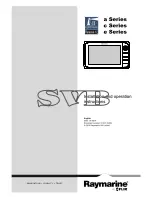
MiniDVD
—This is a process in which -> DVD data, including the DVD directory structure and navigation
menu, is burned onto a blank conventional CD. Due to their lower capacity, MiniDVDs can only store
around 18 minutes of video data. Unfortunately, not many DVD players can play MiniDVDs, making
them mainly suitable for PC playback.
MiniDV
—The consumer version of the DV format. Also see –> DV.
MJPEG
—Motion JPEG is a compression process in which every single frame in the video data stream is
compressed individually.
MPEG
—The Motion Picture Experts Group is a consortium of leading manufacturers and developers of
video technology that determines new standards such as MPEG-1 or MPEG-2.
Nonlinear editing
—Unlike -> linear editing, individual clips can be edited without affecting subsequent
clips. For example, with nonlinear editing, you can shorten or remove a clip at the beginning of a video
project without having to edit the following clips as a result.
NTSC
—NTSC is a video standard used in the USA and Japan. NTSC has a higher frame rate than PAL (30
frames or 60 -> fields per second), but a lower resolution (525 rows, with 480 visible). Color depiction in
NTSC is realized in -> YIQ.
PAL
—This is the most common video standard in Europe. PAL displays 25 frames (or 50 -> fields) per
second and has a resolution of 625 rows, of which 576 are visible. Color depiction in PAL is realized in ->
YUV.
Preview
— The preview offers you a quick overview of your work. The final quality is normally considera-
bly higher than that of the preview.
RAM
—Random Access Memory is the main memory of your PC. Since video editing with effects is very
memory-intensive, the old rule applies: you can never have enough RAM!
Rendering
—this refers to the processing of video or audio clips after an editing operation has been
completed, for example after the application of an effect or filter.
RGB color space
—In the RGB color space, each visible pixel is made up of the three components R(ed),
G(reen) and B(lue). To achieve the natural display of colors on a computer, each of these components
must have at least 256 values. This corresponds to exactly one byte for each color component. A single
complete video image would thus require 768 pixels x 576 pixels x 3 bytes = 1,327,104 bytes. This
corresponds to around 1.2 MB per frame! One second of video in the RGB color space would therefore
require around 31.6 MB of storage space. Using this process, a 2 GB hard drive would have a video
capacity of around one minute. No current hard drive can deliver this volume of data in real time, but a
number of options are available to reduce the data volume of the video signal substantially through
transformation to a different color space (usually YUV) and compression (usually MJPEG).
S video
—Unlike -> Composite video, chrominance and luminance are transmitted separately in S video,
resulting in higher quality.
Saturation
—Describes the ratio of color in the picture.
Storyboard
—Unlike the -> timeline, the storyboard offers a thematic overview of your video project.
Individual scenes can be identified easily, but it does not deliver a sense of the actual length of the
project.
Grabster AV 400 MX (English)
15


































